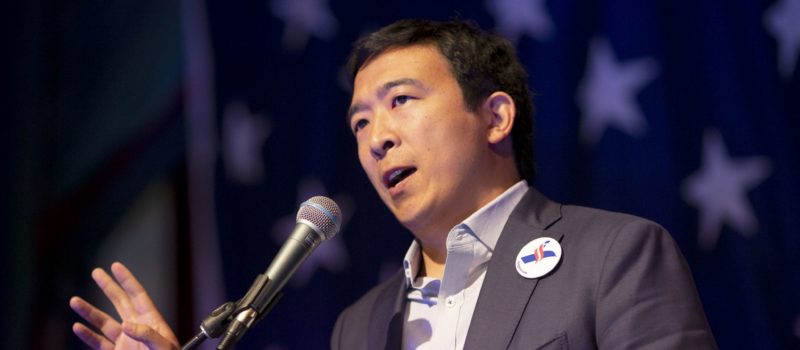VIDEO: How would Andrew Yang give Americans $1,000 per month? With this tax

As the most reliable and balanced news aggregation service on the internet, DML News App offers the following information published by PBS.ORG:
As Andrew Yang takes his place among the top 10 Democratic presidential candidates during a debate in Houston this week, the entrepreneur’s central campaign proposal — and the new tax he wants to use to pay for it — could soon come under increased scrutiny.
Yang plans to give every American adult $1,000 a month in universal basic income, as a way to offset job loss from automation. The first-time presidential candidate proposes paying for the monthly distributions, in large part, by implementing a new 10 percent value-added tax (VAT) on goods and services.
The article goes on to state the following:
A VAT is similar to a sales tax or other consumption tax. It’s a percentage of the price that gets added on to the goods and services you buy at the store or online. But the way the tax is collected is different.
According to TaxPolicyCenter.org: “Retail sales taxes suffer from several enforcement problems. Most notably, the government has no record of transactions with which to verify retailers’ tax payments. In a value-added tax, the chain of crediting creates a natural audit trail, and the seller has more incentive to report the transaction and pay tax.”
VAT creates incentive because at each stage of the retail process, a tax is paid and a portion of that tax is later credited back by the government.
“In the VAT, the chain of crediting creates a natural audit trail,” TaxPolicyCenter.org explains. “In a transaction between two businesses, the seller knows the buyer is reporting the transaction to claim a credit, so the seller has more incentive to report the transaction and pay tax. There’s no similar incentive under a retail sales tax.”
Yang’s plan would set the standard VAT rate at 10 percent. Some goods, such as luxury items, would have a higher VAT rate, while everyday items like groceries would be exempt or taxed at a lower rate.
To get more information about this article, please visit PBS.ORG. To weigh in, leave a comment below.
Trending on DML News
Sorry. No data so far.
Leave a comment
You must be logged in to post a comment.